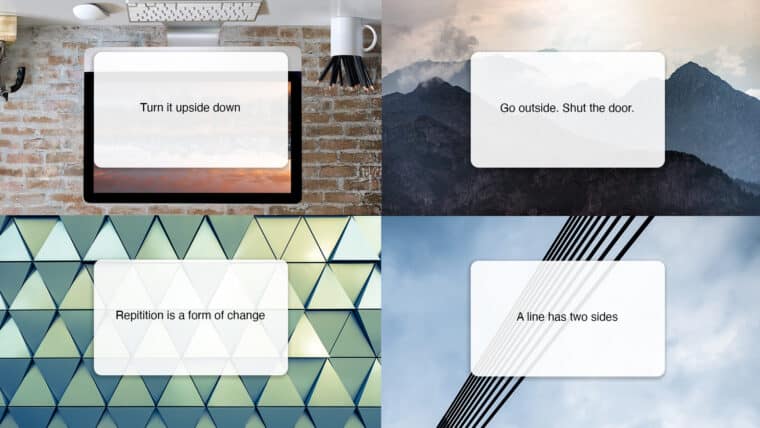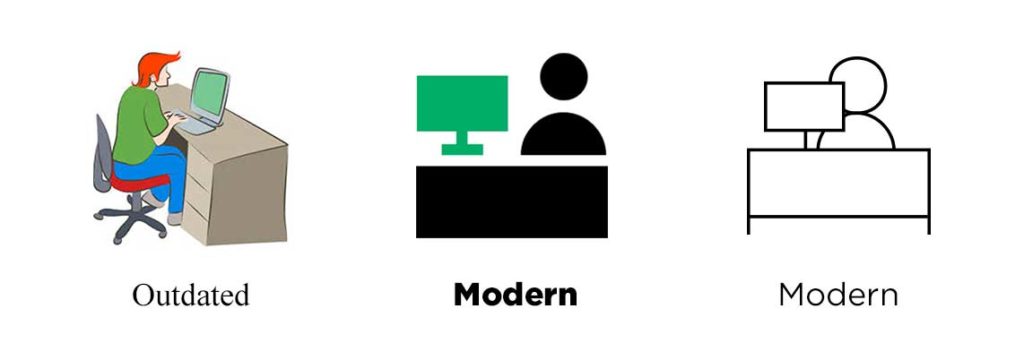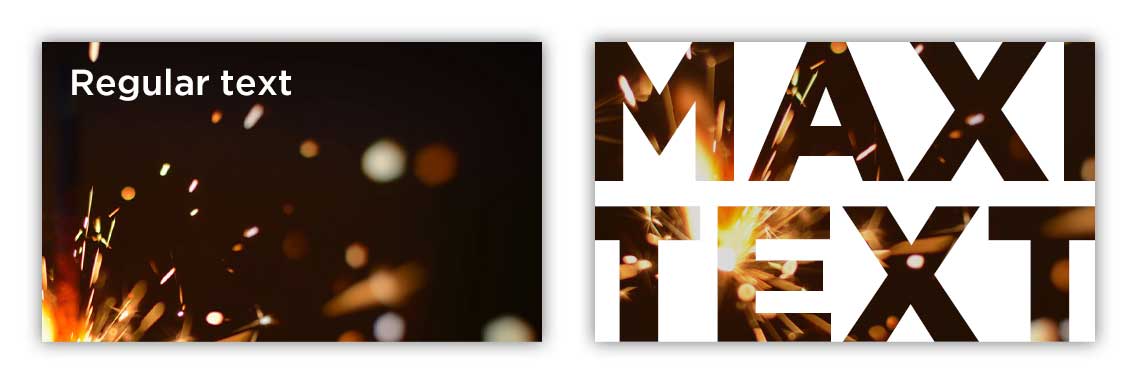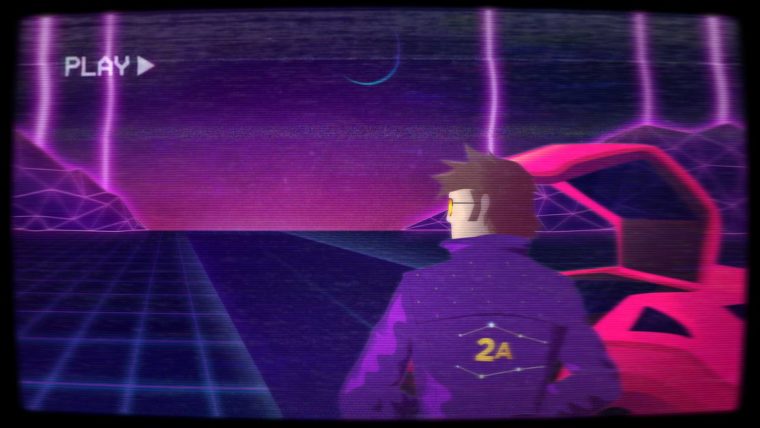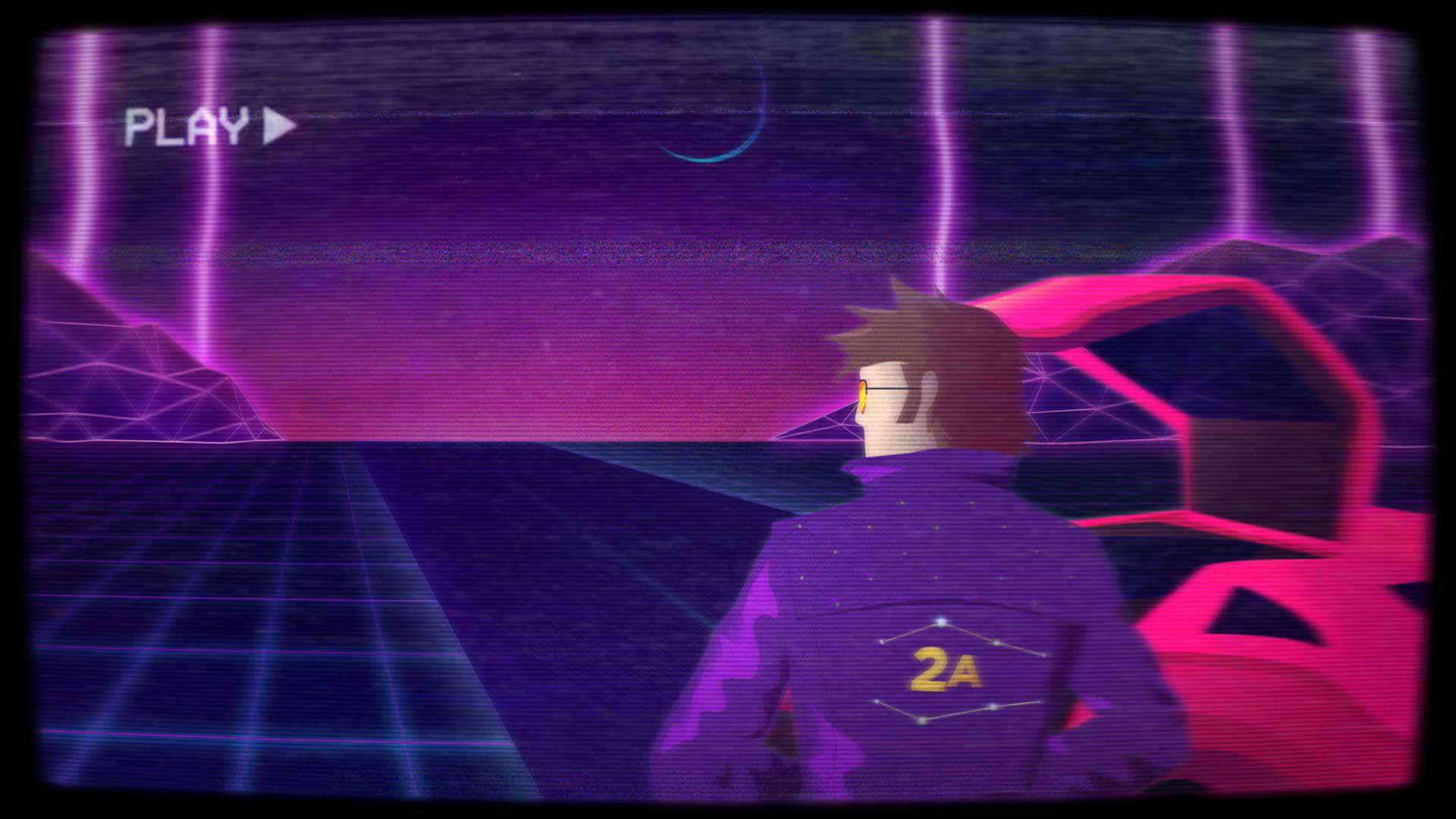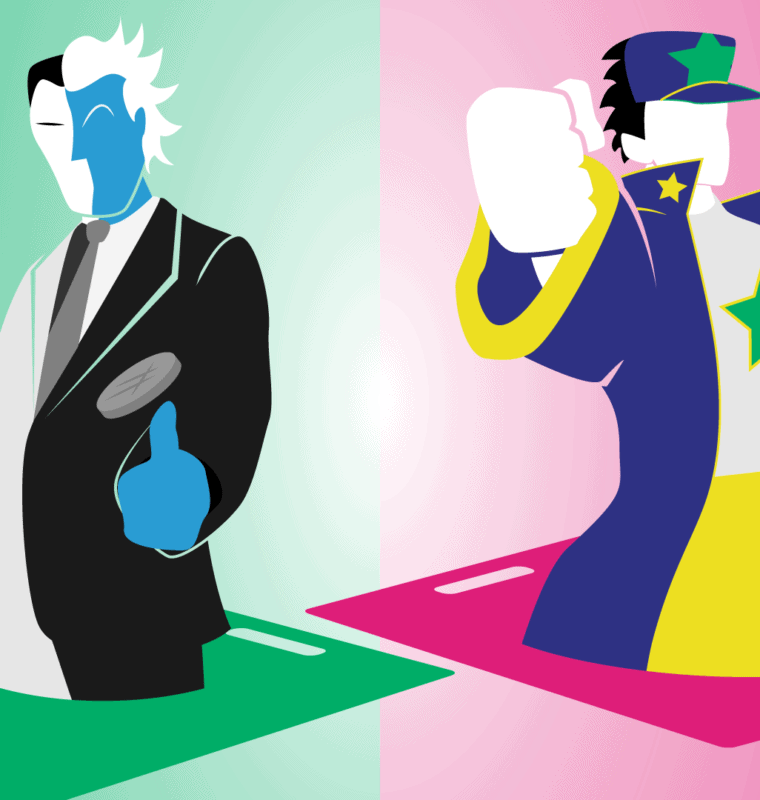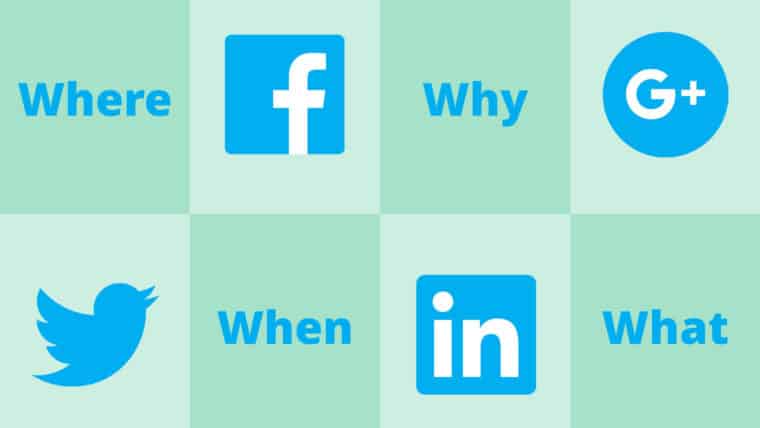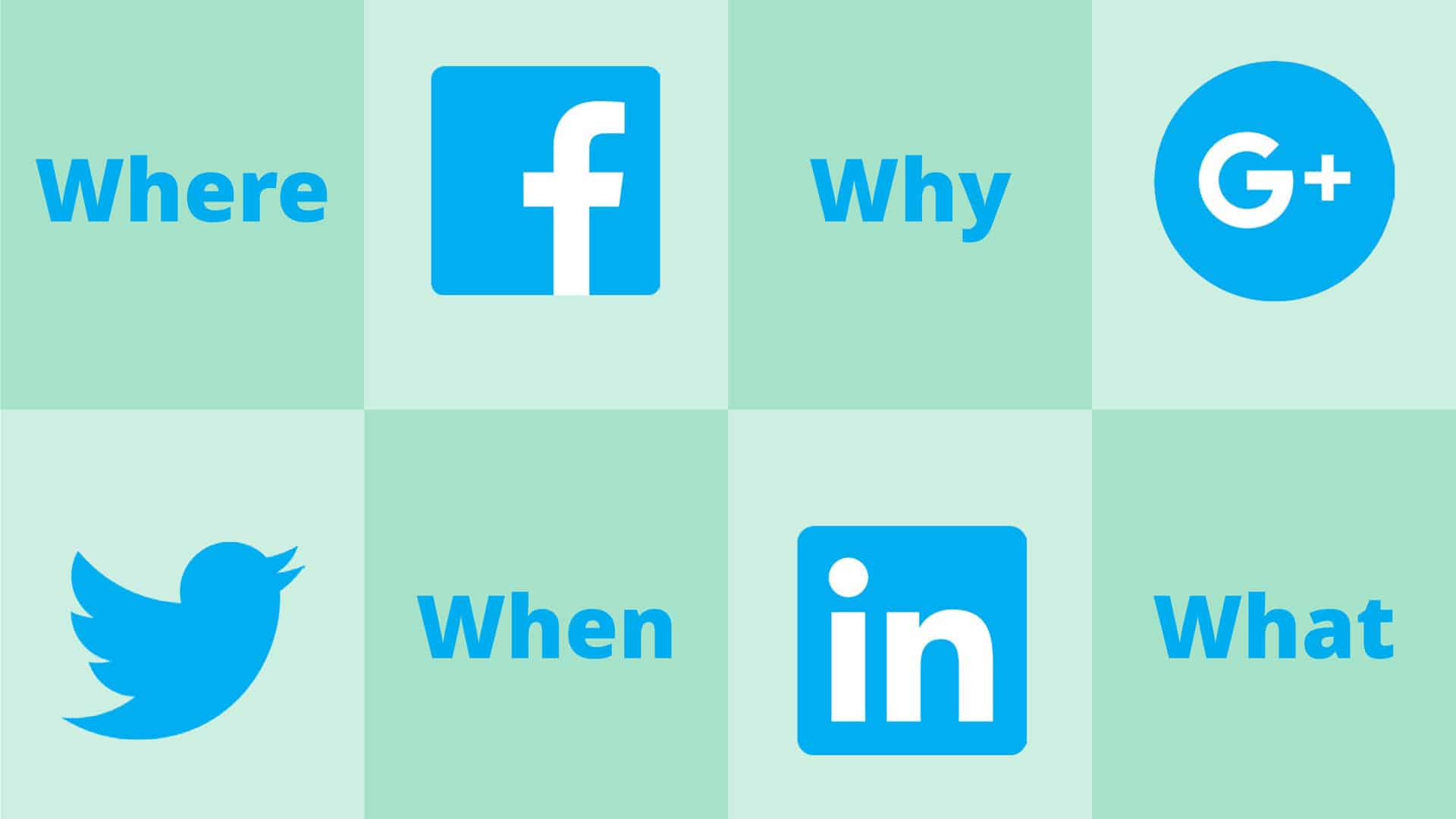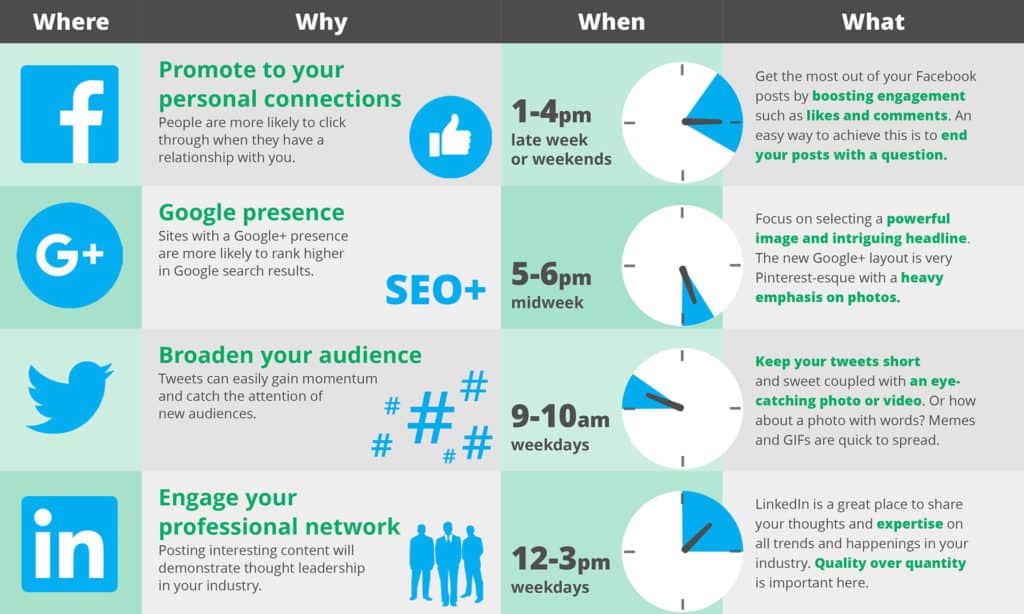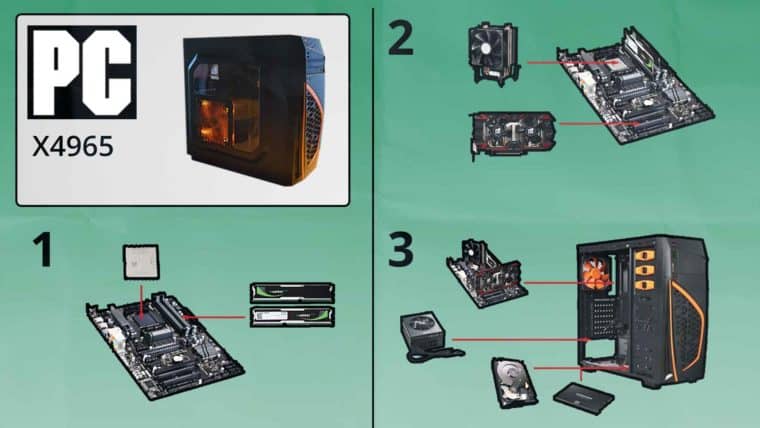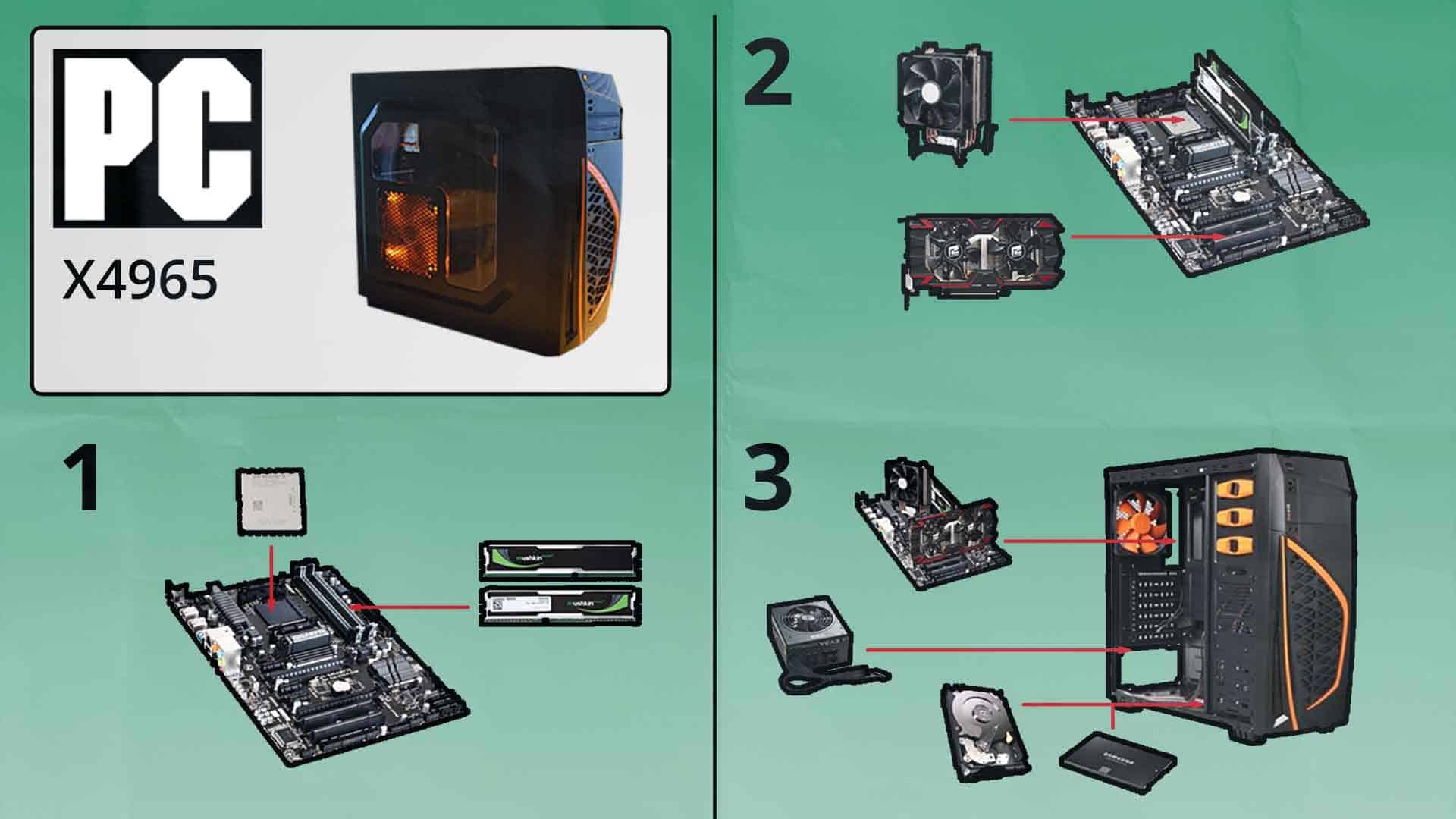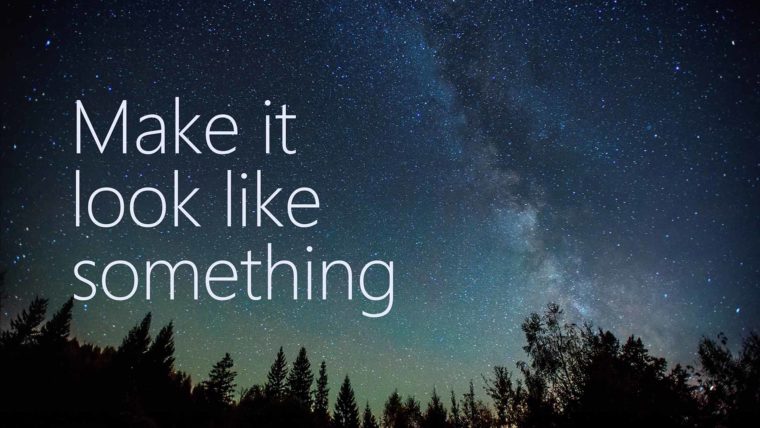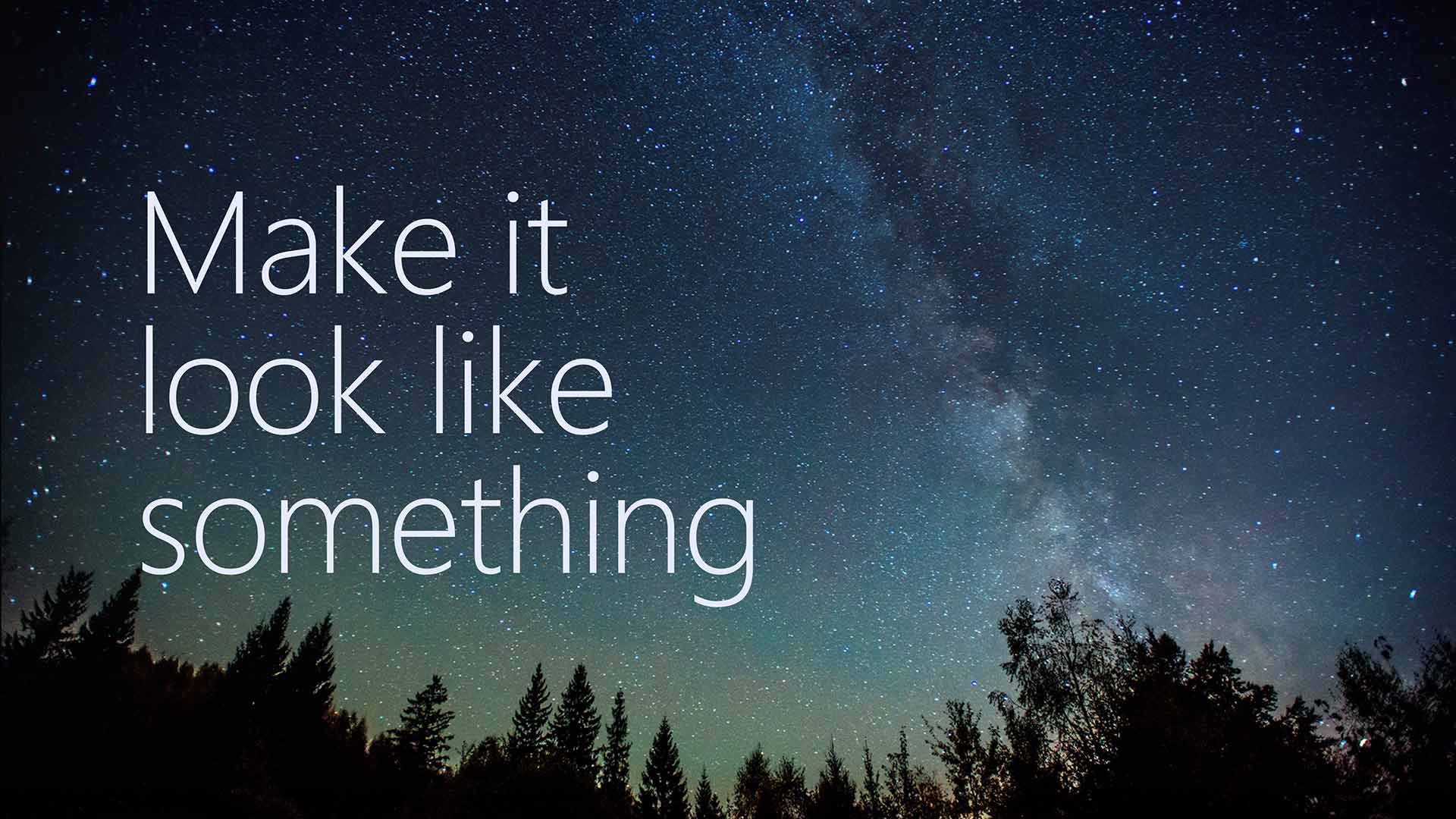
Ask your body. Turn it upside down. Do something boring.
We’ve all heard of thinking outside of the box, but how do you really do it? Famed non-musician Brian Eno and multimedia artist Peter Schmidt developed a unique approach called Oblique Strategies to break through creative barriers. Oblique Strategies is a deck of cards with short phrases meant to introduce constraints or reframe the problem at hand and encourage lateral thinking. Prompts like Ask your body and Turn it upside down help kickstart creativity with somewhat removed and roundabout thoughts.
This year has presented us with a plethora of new challenges to overcome, and it’s obvious that our old way of doing things isn’t cutting it. Curiously enough, the Oblique Strategies hinting at mindfulness have been surprisingly helpful for me lately. I’ve been questioning if I’ve made good use of the time I’ve gotten back from the disappearance of things like commutes and recreational shopping. Strategies like Do nothing for as long as possible and Remember the quiet evenings have a meditative quality and are grounded in gratitude. We’re often so driven by our goals that the pleasure of the moment is lost in the desire to get somewhere as quickly as possible.
There are no correct ways to apply Oblique Strategies. The journey is the destination—lateral thinking puts us in a place to see and understand more. Perhaps the ultimate secret is to stay mindful of where we are and what’s right in front of us. Here are three examples of how to interpret Oblique Strategies to stay in the moment while overcoming obstacles.
Embrace the constraints
A line has two sides. Instead of trying to see through something, look around it. Accept the boundaries you have to work with (like time, medium, or purpose) and spend your time exploring the open space that exists around them. That doesn’t mean accepting things at face value, but truly understanding the box that you’re trying to think outside of. Constraints present a structure, and once we acknowledge the structure, we can begin to create ways to use it in our favor.
Practice the failure bow
What mistakes did you make last time. We’re fallible. To deny that is to deny room for growth. Not all strategies will lead directly to the end goal (they shouldn’t, really), but gracefully accepting failure and letting it flow through allows us to get one step closer to true success. If we look closely at the most embarrassing details and amplify them we are welcoming the opportunity to learn from mistakes and cultivating a culture with less ego. In essence, failure is far more powerful for learning than engineering a string of successes—so celebrate those moments!
Unlearn what you’ve been taught
Discover the recipes you are using and abandon them. Many of the processes we’ve learned were developed for a different time and place, so it’s more important than ever to truly step away from the orthodoxy. When time is of the essence this can be a challenge, but prioritize the idea and allow yourself a moment to view something with a child’s eyes and entertain the ridiculous or unexpected.
No matter what you do, accepting what cannot be changed, welcoming failure, and not being afraid to let go will enable out-of-the-box thinking. But maybe more importantly, just Go outside. Shut the door. And Breathe more deeply.


